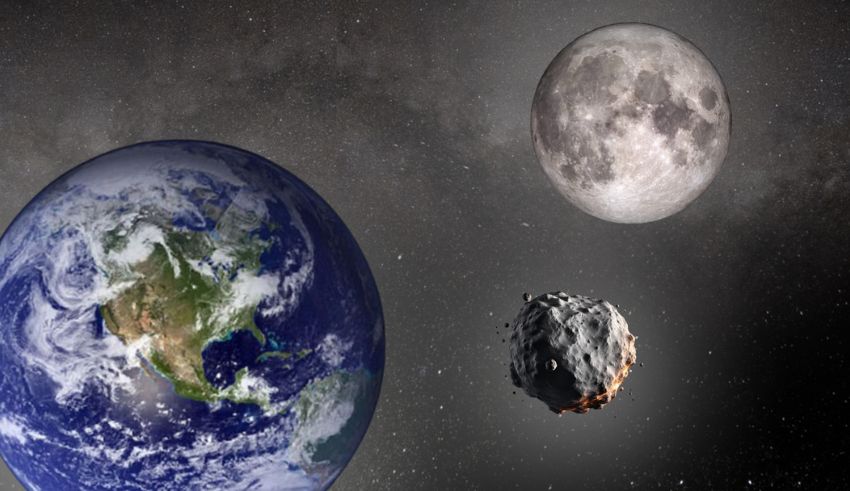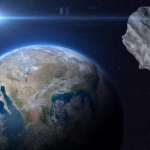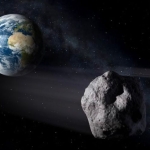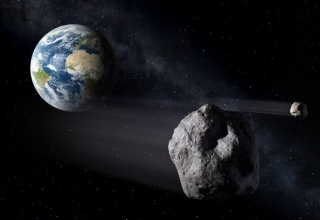
On September 29, 2024, Earth will experience an amazing astronomical occurrence as a new “mini-moon” visits our planet momentarily for two months. On August 7, 2024 NASA discovered this incredible celestial body, asteroid 2024 PT5; its approach has thrilled scientists and astronomers. Though they pass by Earth rather frequently, this phenomena is particularly important since the asteroid will suddenly become a second moon, circle our globe before on its cosmic journey.
An unusual celestial occurrence
Originating in the Arjuna asteroid belt, asteroid 2024 PT5 is expected to resurface here after a brief orbit around Earth. The asteroid, which has a diameter of about 33-foot (10-meter diameter), has been called a “second Moon” based on its fleeting orbital location. Unlike Earth’s natural satellite, the asteroid is far too small for the unaided vision, though. Its dimness and small scale make viewing difficult even with amateur telescopes; so, its main focus of research is on scientists having access to more sophisticated astronomical instruments.
In the sphere of space exploration, this event is significant even if its scale and transitory aspect are small. A rare event, the brief capture of an asteroid by Earth’s gravity offers researchers new ideas and data. NASA calls this asteroid a Near-Earth Object (NEO), a designation used for any object—such as a comet or asteroid—drawn nearer Earth by gravitational attraction. Though often observed passing Earth, very few NEOs are caught in our gravitational field and transformed into transitory moons.
Why would Earth have a “Second Moon”?
American Astronomical Society’s study on the rare occurrence of mini-moons reveals Usually produced from asteroid belts like Arjuna, Earth’s gravitational pull snags these small cosmic debris at times. The object momentarily circles Earth to generate what scientists refer to as a “temporary moon,” or “mini-moon.” Regularly passing past Earth at various distances, part of a larger population of Near-Earth Objects, these captured asteroids
Lead author of the research, Universidad Complutense de Madrid professor Carlos de la Fuente Marcos provides more details on the mechanics of this event: “Objects in the Arjuna asteroid belt fall within the Near-Earth object population comprising comets and asteroids. Under these conditions, the object might become a fleeting moon of Earth and the geocentric energy of it might get negative. This specific object will undergo this process starting next week and for around two months.
The brief capture of 2024 PT5 is among the best examples of how gravitational forces could attract smaller objects into Earth’s orbit—even if just momentarily. Such events provide researchers a special opportunity to explore the dynamics of minor celestial bodies and their interactions with the gravity of Earth.
Two Different Mini-Moon Events
Professor Carlos de la Fuente Marcos and his team mainly classify mini-moon phenomena into two main classes. Asteroids in the first kind perform one or more complete rotations about Earth and remain in orbit for a year or longer. Though still fleeting, these mini-moons present more chances for study and watching. The second class under which asteroid 2024 PT5 fits is those that either stay in Earth’s orbit for just a few days, weeks, or in the case of 2024 PT5, a few of months, and do not complete a full orbit.
Usually minor in nature, these short-term mini-moons are not readily seen with the unaided eye; most of them, including 2024 PT5, are invisible. Casual sky-watchers could hardly find the small scale and bad appearance of the asteroid without the help of advanced telescopes. Still, the scientific worth of such interactions rests in the opportunity to probe the composition and behavior of these asteroids under Earthly gravitational field.
Why Asteroids Inspired 2024 PT5 Matter
Asteroid 2024 PT5 and other mini-moons offer perceptive study of Near-Earth Object behavior. Traveling around the solar system, these objects are affected by a spectrum of gravitational forces while always moving. Every now and then Earth’s gravity is strong enough to momentarily grasp one of these objects and pull it into orbit before it continues on its course. Though most of these objects are small, such as asteroid 2024 PT5, their study enhances knowledge of the greater population of NEOs and the threats or advantages they could cause to Earth.
Keep Reading
Moreover providing important signals on the early solar system evolution are asteroids like 2024 PT5. Many NEOs are made of basic components that have remained basically unmodified from the birth of the solar system. By means of study of these objects, scientists can better grasp the conditions billions of years ago and the development of planets, moons, and other celestial bodies.
A Fleeting Visit: PT5 Short Stay until 2024
Though the idea of a second Moon might thrill the imagination, fact is that the stay of asteroid 2024 PT5 in Earth’s orbit will be brief. Predictably escaping Earth’s gravitational attraction by November 25, 2024, the asteroid has just two months of orbit. Scientists are now largely focused in tracking its path and analyzing its composition to glean as much information as possible till it returns to the Arjuna asteroid belt.
Most mini-moons, as Marcos and his associates noted, do not stay in orbit long enough to complete even one cycle around Earth. Instead they enter Earth’s gravitational field, orbit briefly, then go once more into space. Some of these objects could reappear close to Earth in the future, but other solar system gravitational influences produce unstable orbits for all of them.
Fascinatingly, asteroid 2024 PT5 is expected to pass Earth around November 8, 2055. Though it’s not clear whether it will once more be considered as a mini-moon, its return gives scientists another opportunity to study its course and behavior.
Last Thought: A View into the Changing Cosmos
The brief visit of asteroid 2024 PT5 as a transitory mini-moon offers a remarkable view into the dynamic and always changing character of our solar system. Although most people won’t know about it, this rare event helps scientists better grasp Near-Earth Objects, their behavior, and their interaction with Earth’s gravity. Every interaction with a mini-moon like 2024 PT5 helps us to understand the vast and complex universe that envelops us as technology advances and our capacity to see these phenomena rises.

























